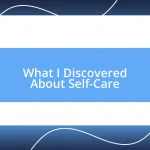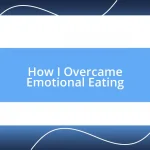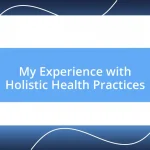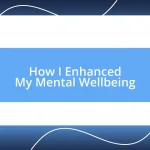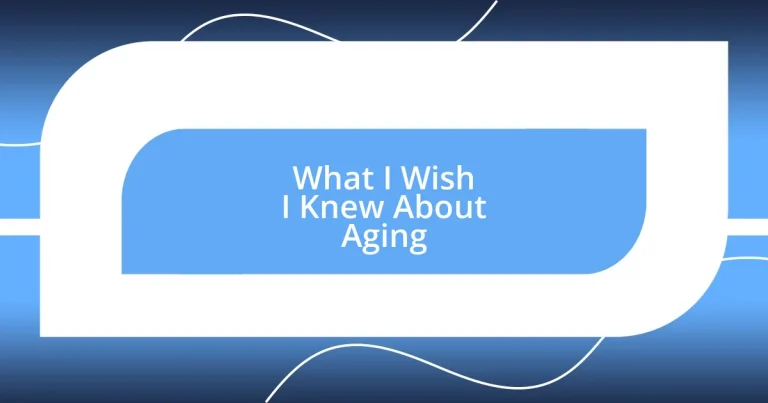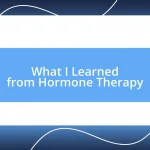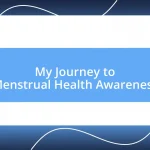Key takeaways:
- Aging involves significant physical, emotional, and social changes, requiring mindfulness and adaptation to maintain well-being.
- Dispelling common myths about aging reveals that cognitive sharpness, physical activity, and social engagement can thrive in later years.
- Planning for future needs, including financial and healthcare considerations, is crucial for a secure and fulfilling aging experience.
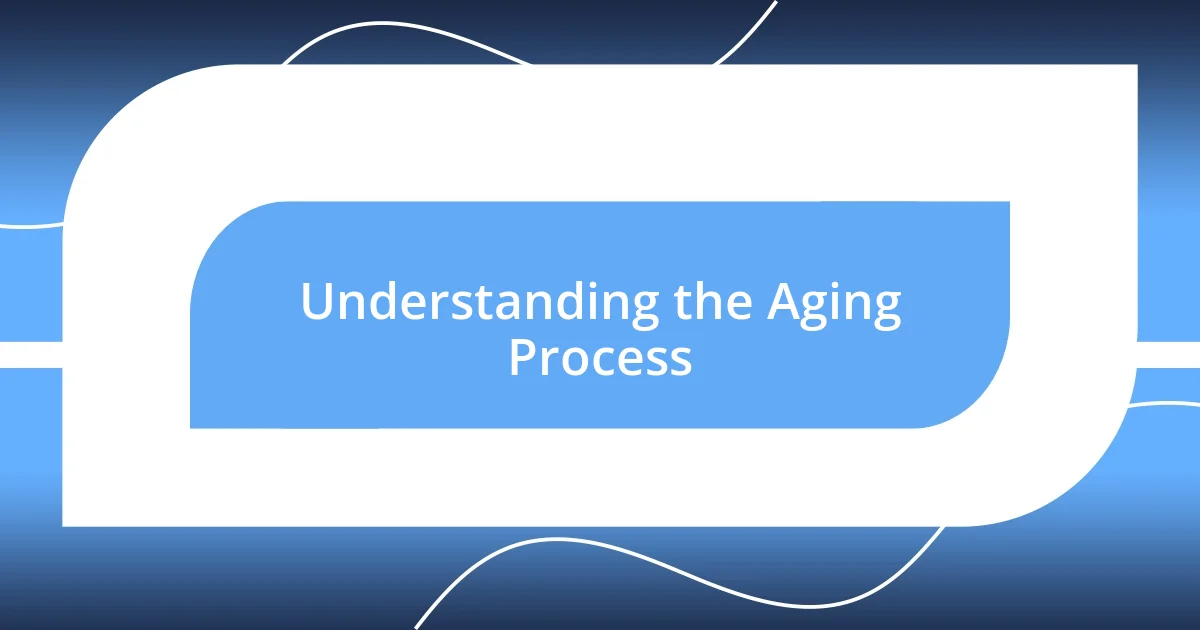
Understanding the Aging Process
Aging is an inevitable part of life, but have you ever stopped to think about what it truly means for your body and mind? In my experience, I’ve learned that aging isn’t just about getting older; it’s a complex process involving various physical, emotional, and even social changes. Sometimes, I catch myself reminiscing about my youth, realizing how the same activities that once felt effortless now require a bit more planning and care.
During my grandmother’s later years, I observed how her body faced challenges that seemed to spring up overnight. Simple tasks, like climbing stairs, became monumental feats. It made me reflect on the intricacies of the aging process—things like muscle loss and decreased bone density, which, despite being common knowledge, were starkly evident in her everyday life.
Emotionally, aging can be a roller coaster. I’ve noticed that while I might embrace wisdom and perspective, there’s a sense of loss attached to the vitality of my youth. Has anyone else felt that bittersweet mixture of gratitude for experiences gained and nostalgia for days gone by? It’s a stark reminder that understanding the aging process is more than just studying biological changes; it’s about navigating the emotional landscape that comes with them, too.
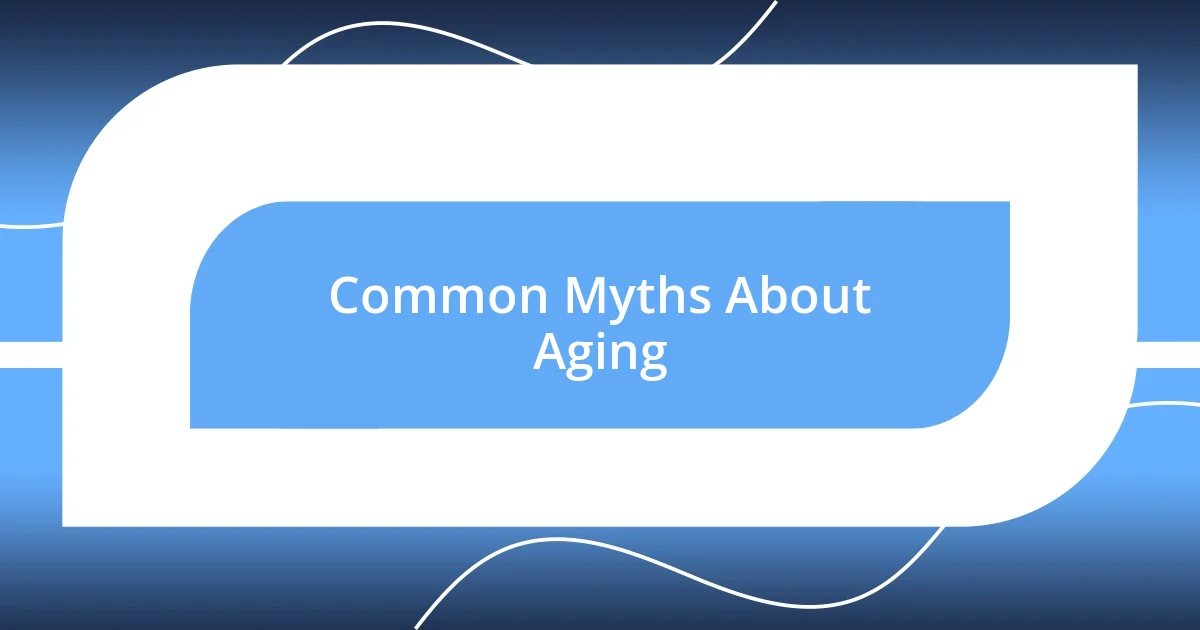
Common Myths About Aging
As we navigate through common myths about aging, it’s eye-opening to realize how many misconceptions we hold. For instance, many believe that all older adults lose their cognitive sharpness as they age. I remember my neighbor, Mrs. Smith, who took up painting in her seventies and, not only did she master the craft, but she also participated in local art shows! Her experience shattered my preconceptions, demonstrating that staying mentally engaged can lead to vibrant, fulfilling later years.
Another widespread myth is that physical decline is an inevitable part of aging. In fact, a friend of mine started a running group for seniors, showing me that staying active at any age is not only possible but also vital. Instead of resigning ourselves to decline, we can redefine what it means to age gracefully. It’s about adopting healthy habits and practicing resilience in face of obstacles.
Finally, the belief that aging inevitably leads to isolation and loneliness deserves some scrutiny. I had a chat with a family member who embraced social media in their sixties. They joined online communities that fostered friendships, proving that connections can thrive, regardless of age. It’s all about perspective—aging doesn’t mean retreating; rather, it can open doors to new relationships and experiences.
| Myth | Reality |
|---|---|
| All older adults experience cognitive decline. | Many stay sharp through learning and engagement. |
| Physical decline is inevitable with age. | Active lifestyles can enhance physical health at any age. |
| Aging leads to isolation and loneliness. | Many find new social connections through technology and community involvement. |
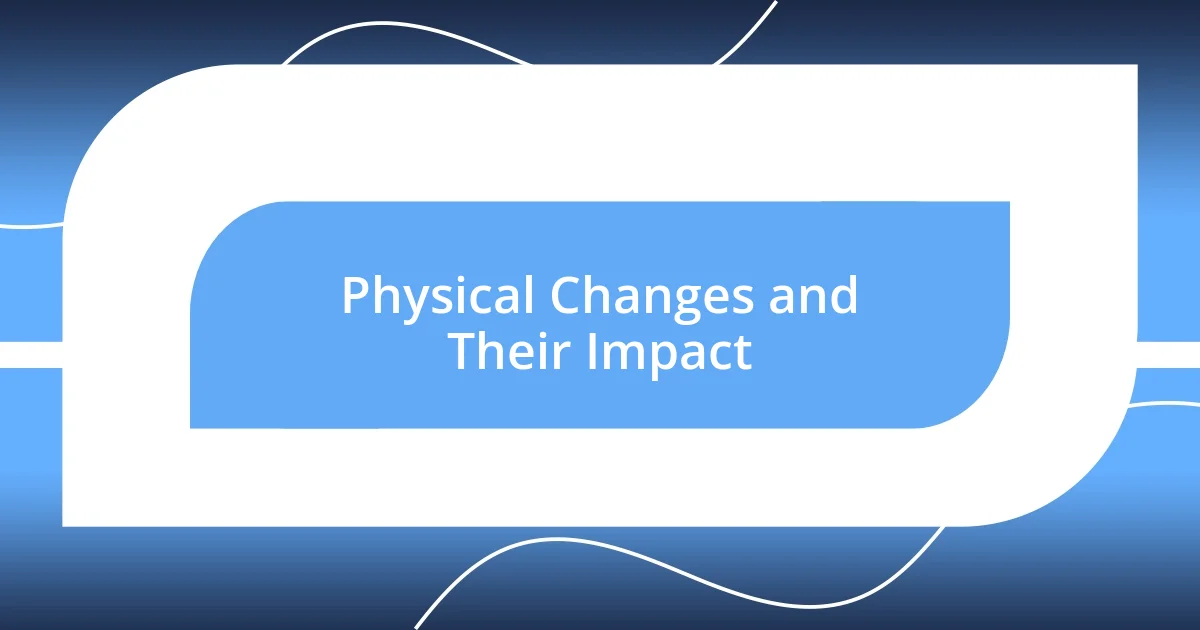
Physical Changes and Their Impact
As I reflect on the physical changes that accompany aging, it’s evident that these shifts can have a significant impact on everyday life. I often find myself noticing little things, like how I’m not as spry as I used to be. For instance, I remember the days when I could jump out of bed, grab my sneakers, and head out for a spontaneous run. Now, I feel compelled to stretch first, perhaps something I took for granted back then. This shift in my physical capabilities has taught me a lot about patience and mindfulness in my routines.
Some common physical changes and their impacts include:
- Reduced Muscle Mass: Loss of muscle can lead to diminished strength, impacting daily tasks.
- Joint Stiffness: This can make movement uncomfortable, sometimes leading to decreased physical activity.
- Changes in Skin Elasticity: As our skin loses elasticity, this can affect self-image and confidence.
- Decreased Bone Density: This makes fractures more likely, requiring more care in physical activities.
- Altered Metabolism: This can lead to weight management challenges, altering dietary needs and habits.
The emotional journey tied to these physical changes can be quite profound. I distinctly remember feeling a twinge of frustration when I tried to carry my groceries as I once did only to be met with an unexpected strain in my back. It’s moments like these that bring both humility and a deeper appreciation for what my body has accomplished thus far. Through these experiences, I’ve grown more attuned to my body’s needs, fostering a sense of respect that I hope will carry me well into the years ahead.
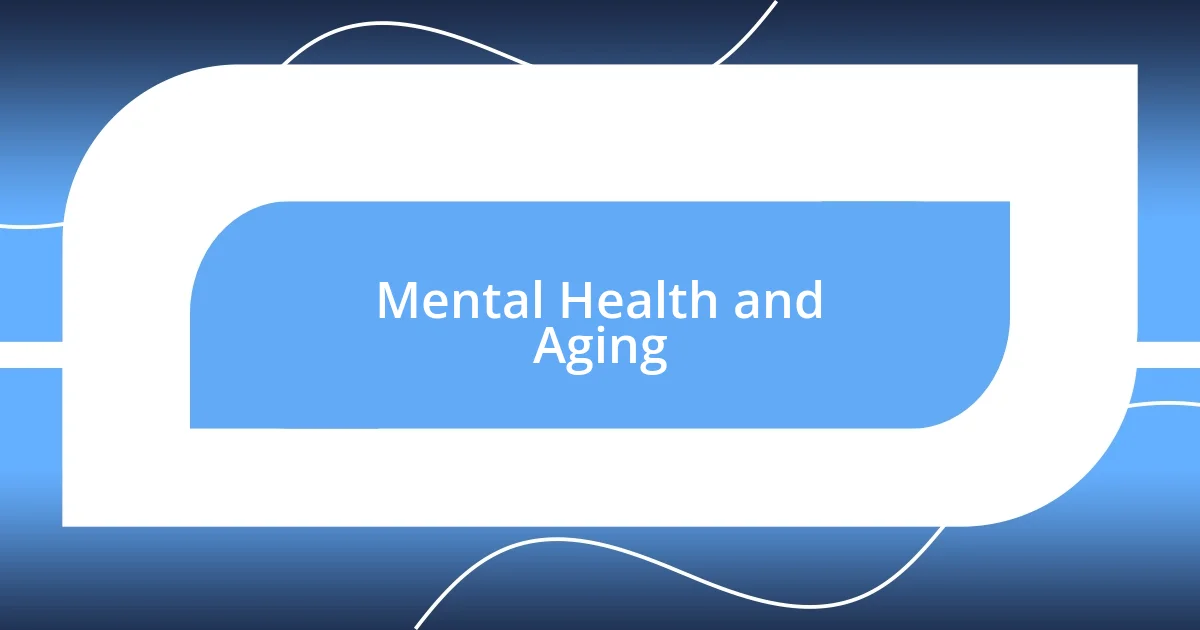
Mental Health and Aging
Mental health during the aging process often mirrors the physical changes we experience. I’ve noticed that my moods can fluctuate just as my energy levels do, sometimes leaving me wondering why I feel more anxious than I used to. It became clear to me that acknowledging these fluctuations is vital; after all, our mental well-being deserves as much attention as our physical health.
Reflecting on past friendships, I realized many of my peers share a common concern: the fear of loneliness in later years. I remember when my best friend moved into a retirement community. Initially, she feared it would be isolating. However, she discovered numerous clubs and interests that reignited her spirit, reminding me that social engagements can invigorate our mental health. It’s curious to think about how sometimes, our perceptions of aging can hinder our happiness when they could instead be gateways to new experiences.
On a personal note, I often find solace in creative outlets, like journaling or painting, as a way to manage stress and anxiety. There’s a unique comfort in expressing feelings through art; it’s like a therapy session that fits in my schedule. Have you ever tried channeling your emotions into a creative pursuit? The process of creation not only enriches my mental landscape but also builds resilience, proving that our minds can flourish even as we embrace the changes that come with aging.
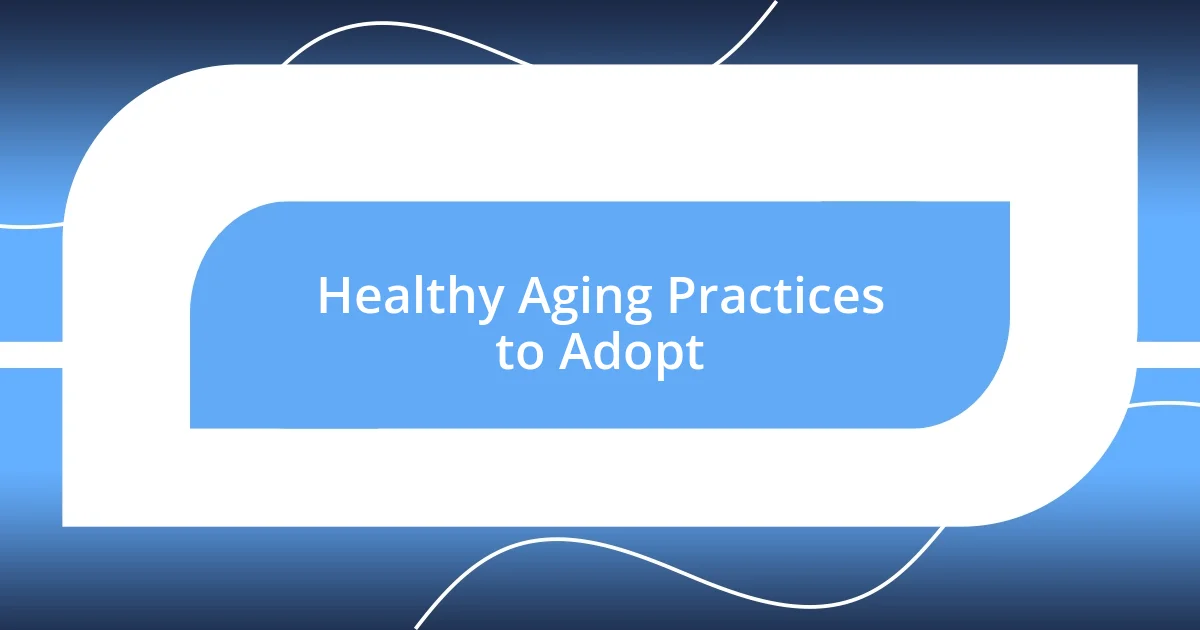
Healthy Aging Practices to Adopt
Adopting healthy eating habits is one of the most impactful practices I’ve embraced for aging gracefully. I used to think that eating whatever I wanted was fine, but I’ve learned that nourishing my body matters more than I realized. I remember switching from processed snacks to whole foods like fruits and nuts, and the difference in my energy levels was astonishing. Have you ever noticed how good you feel after a balanced meal? It’s like your body truly appreciates the care you give it.
Regular physical activity is another cornerstone of healthy aging that I can’t emphasize enough. I used to dread the thought of “exercising,” associating it with rigid routines. Now, I find joy in simple activities like walking my dog or dancing in my living room. Each step makes me feel more connected to my body and boosts my mood. What activities make you feel alive? Engaging in movement that you love transforms exercise from a chore into a delight.
Lastly, I’ve discovered the immense benefits of mindfulness and stress management techniques. In my younger years, I often brushed off the idea of meditation as just a trend, but I recently began incorporating short sessions into my daily routine. It’s incredible how even a few minutes of deep breathing can ground me during hectic days. Have you experienced that moment of clarity after stepping back and just breathing? It’s a simple practice that reinforces my mental resilience and helps me approach changes with a positive mindset.
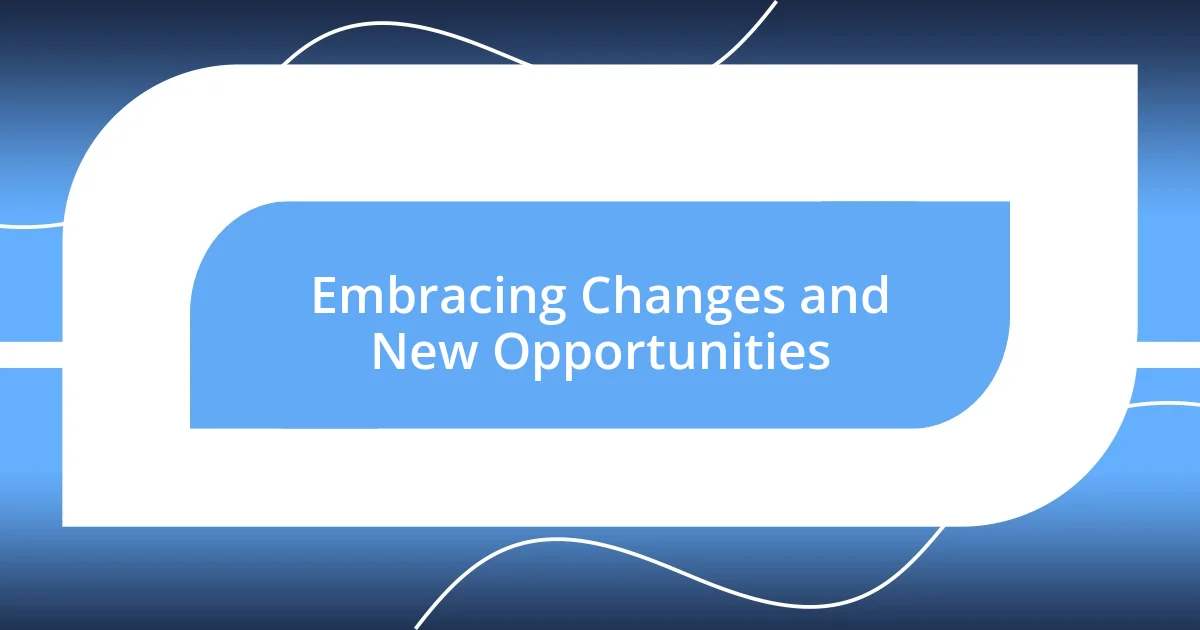
Embracing Changes and New Opportunities
Embracing the changes that come with aging can be a transformative journey, one I didn’t fully appreciate until I faced those shifts myself. I remember the first time I realized that my interests were evolving. It was as if I had a door to an entirely new room in my life that I hadn’t even known existed. How often do we overlook the opportunities for growth right in front of us? This realization sparked a thrill in me, prompting me to explore new hobbies, like pottery, which I had never tried before. The sense of accomplishment I felt after creating my first bowl was simply exhilarating!
As our bodies and circumstances change, I’ve found that vulnerability can be a powerful ally. When I began sharing my feelings about aging with friends, it opened up avenues I hadn’t anticipated. Suddenly, we were sharing dreams we had shelved for too long, like traveling to places we used to fantasize about. Have you ever noticed how discussing fears can morph them into exciting plans? This shift in perspective allowed me to turn nervousness about the future into an enthusiastic eagerness to savor every moment and opportunity.
I often reflect on what it means to embrace new beginnings at this stage of life. I once accepted an invitation to a community art class, even though I felt uncertain about my abilities. The warm camaraderie of fellow participants swept me up, and to my surprise, I found joy in creating alongside others. It was a poignant reminder that each new chapter, no matter how daunting, can lead to meaningful connections and experiences. Isn’t it fascinating how stepping outside our comfort zones can lead us to discover parts of ourselves we never knew existed?
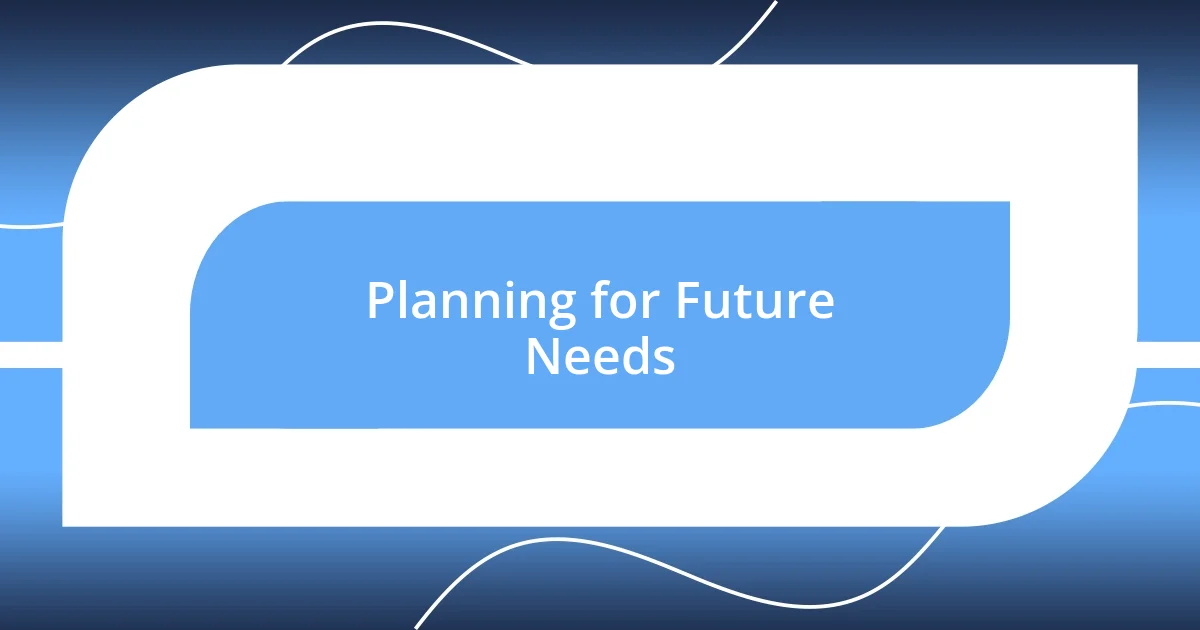
Planning for Future Needs
Planning for future needs is an essential aspect of aging that I sometimes overlooked in my earlier years. I remember the first time I sat down to assess my financial situation; it felt daunting and a bit overwhelming. But once I started creating a budget, I felt a sense of control and peace because I knew I was paving the way for a secure future.
One area I underestimated was healthcare planning. A few years ago, I had a sudden health scare that shook my world. It made me realize how crucial it is to understand your health insurance options and to have a backup plan—like a health proxy or an advanced directive. Have you thought about who will make medical decisions for you if you can’t? Taking the time to prepare these documents lifted a huge weight off my shoulders and gave me confidence.
In my experience, it also helps to consider the social aspect of aging. When I moved to a new town a while back, I understood the importance of establishing a community network. I started volunteering, joining local classes, and even hosting game nights. How often do we prioritize social connections in our planning? Having a trusted group of friends not only enriches life but also provides a support system when future needs arise. It’s all about creating a safety net for yourself, both practically and emotionally.





